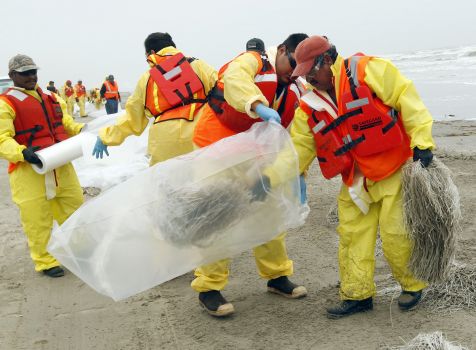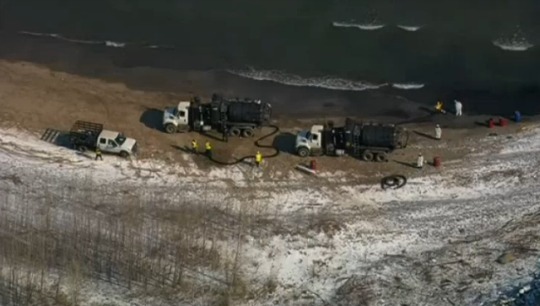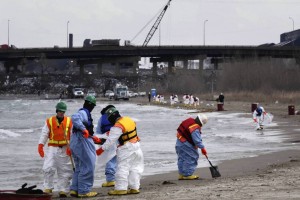Oil and gas industry looking to kill lawsuits from Jefferson, Plaquemines over wetlands
By Tyler Bridges, Staff writer April 8th, 2014
A high-profile lawsuit filed by the Southeast Louisiana Flood Protection Authority – East is not the only lawsuit under assault by the oil and gas industry and its allies in the state Legislature.
They are also trying to kill lawsuits filed by two parishes – Jefferson and Plaquemines – that say oil and gas companies dredged coastal wetlands to drill their wells and then violated state permits by failing to restore them to their previous condition.
“I think it’s being driven by Big Oil,” said John Carmouche, part of the Baton Rouge-based law firm that filed the parishes’ lawsuits. “Big Oil is the party that destroyed the coast and is responsible. They are trying to get immunity from the courts.”
“That’s nice rhetoric,” countered Chris John, president of the Louisiana Mid-Continent Oil and Gas Association, whose members include the major oil companies. “But the parishes don’t have jurisdiction to enforce state permits. If they have a beef against the state, they should go to the state.”
The effort to kill those two lawsuits gets its first hearing next week before the House Civil Law and Procedure Committee. The matter was initially set for Tuesday, but was moved back so it could be the only item on the agenda, giving the public more time for comments.
The bill, by state Rep. Joel Robideaux, R-Lafayette, would derail the parishes’ lawsuits by requiring them first to file their allegations with the state Department of Natural Resources to determine whether the oil and gas companies violated the terms of their permits. The agency would have to find violations and then authorize any lawsuit.
The bill also would require that any money won through a lawsuit be deposited in the state Coastal Resources Trust Fund – meaning that Carmouche and the other trial attorneys would get nothing – and give state officials the authority to decide how to spend that money on coastal restoration.
“The bill is about setting up what I would consider is good policy for compliance and procedure,” said Don Briggs, president of the Louisiana Oil and Gas Association. “This will set up a procedure for a parish to follow if they think something is out of compliance, rather than filing a lawsuit.”
Until now, the focus at the Capitol has been on state Sen. Robert Adley, R-Benton, and his efforts to kill the lawsuit filed by the flood protection authority. One Adley bill that would do so has already won Senate approval, while another has won approval by a Senate committee.
Gladstone Jones, the lead attorney for the flood protection authority’s lawsuit, said his side opposes the Robideaux bill.
“It’s another bill to bring the whole thing down and get it out of the court system,” Jones said.
But two important differences between them give the parish lawsuits a greater chance of surviving the legislative session intact.
To begin with, opponents of the Robideaux bill – such as Jefferson Parish President John Young – said that it would trample on the rights of local government.
“They’re trying to micromanage and tell parish governments what they can and can’t do,” Young said. “That’s just like the federal government trying to tell the state Legislature what to do.”
Young expects that this argument will find some favor since many state legislators previously served as local officials.
Secondly, Carmouche notes that the attorneys representing the parishes are not working on a contingency-fee basis – meaning they would not get set percentages of any monetary award and would receive payment beyond the damages given to the parish.
“The fees would be decided by the court, or the oil companies if the case is settled,” he said.
This is an important distinction. Gov. Bobby Jindal and Adley have sharply criticized the contingency fee that Jones and the trial attorneys representing the flood protection authority would receive – attacks that have resonated with state lawmakers.
Jones and his colleagues would earn from 22.5 percent to 32.5 percent of the money won by the flood authority, depending on the amount of the judgment or settlement, according to the contract with the board.
In fact, Jindal has muted his criticisms of the parishes’ lawsuits while removing two members of the flood authority who backed its lawsuit, including John Barry, its prime champion.
Robideaux, a third-term lawmaker who is an accountant, said he filed the bill after a Lafayette company complained to him that it was among the dozens of companies targeted by the parishes’ lawsuit because it had brought equipment on barges.
“I think that violates the spirit of the legal system,” Robideaux said. “You shouldn’t be able to throw something against the wall and see what sticks. That is patently unfair.”
Carmouche, of course, believes that the courts offer the correct remedy.
“The oil and gas companies have to re-vegetate, detoxify and restore the wetlands to their natural state,” he said. “If they dug canals and then did not close the canals, we must hold them accountable.”
About 20 parishes claim coastland in Louisiana. Besides Plaquemines and Jefferson, two other parishes are considering joining the lawsuit, Cameron and St. Bernard.
Besides Carmouche, three other law firms are representing the parishes. They are: Metairie-based Connick & Connick; Metairie-based Burglass Tankersley; Lake Charles-based Mudd & Bruchhaus; and Belle Chasse-based Cossich Sumich Parsiola & Taylor.
The Robideaux bill would retroactively seek to kill the lawsuits, something that the trial attorneys say would not pass a legal challenge. The Adley bills do the same.
While getting less attention, the Robideaux bill has already led to at least one heated exchange. Environmental groups on Friday demonstrated outside the Poydras Street law firm of Liskow & Lewis, which represents BP and other oil companies. One of Liskow’s attorneys is state Rep. Neil Abramson, D-New Orleans, who will lead Tuesday’s House Committee meeting.
The environmental groups – Louisiana Bucket Brigade, the Sierra Club, the Green Army and the Gulf Restoration Network – called on Abramson to recuse himself from the bill. Abramson said he saw no conflict and hadn’t decided how he would vote.
The Lens’ donors and partners may be mentioned or have a stake in the stories we cover.
ABOUT TYLER BRIDGES
More from this author
Tyler Bridges covers Louisiana politics and public policy for The Lens. He returned to New Orleans in 2012 after spending the previous year as a Nieman Fellow at Harvard, where he studied digital journalism. Prior to that, he spent 13 years as a reporter for the Miami Herald, where he was twice a member of Pulitzer Prize-winning teams while covering state government, the city of Miami and national politics. He also was a foreign correspondent based in South America. Before the Herald, he covered politics for seven years at The Times-Picayune. He is the author of The Rise of David Duke (1994) and Bad Bet on the Bayou: The Rise of Gambling in Louisiana and the Fall of Governor Edwin Edwards (2001). He can be reached at (504) 810-6222.
Special thanks to Richard Charter


